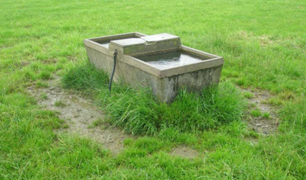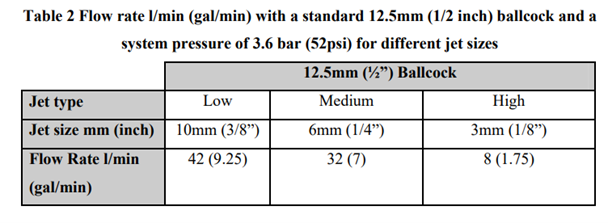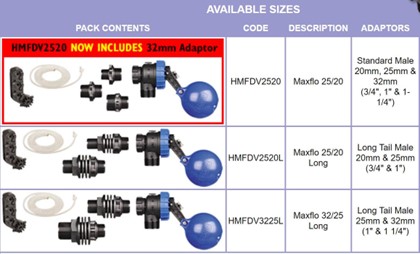Water Troughs - It’s All in the Flow Rate!
Cows can drink anything from 10 litres of water on a cold, wet day to 60 to 110 litres on a really hot day. They can typically drink at the rate of 14 litres a minute from a trough. Allow cattle 10 to 15 litres per 100kgs of body weight per day. Carefully consider trough location; cows don't like to walk more than about 250 metres to get a drink. Locate water troughs away from paddock gateways and farm roadways. This will shorten the walk to water, prevent bottlenecks, and reduce the wear and tear at gateways. Check water troughs regularly to ensure that ball valves are working properly and that there are no leaks.
Flow rate should be considered before trough size in ensuring adequate supply. However, large troughs provide more drinking space and can compensate a bit for poor flow rate at peak drinking time. The main advantage of big troughs is they give more space for drinking. Each cow drinking at a trough needs 450mm of space measured along the trough rim. For large herds it may be necessary to install a second trough in the paddock. The troughs should be spaced suitably so that cows have no more than 250 metres to walk to water. Siting troughs underneath a paddock wire fence will more than halve drinking space. Heifers and timid cows may also get bullied if adequate drinking space is not available. The area around the trough should be able to take a lot of cow traffic i.e., a similar surface to a farm roadway and ideally have good drainage.
 Calculating water flow rate assuming a daily demand of 100 litres per cow in hot weather, almost 50% of which is consumed in a three-hour period soon after evening milking, means that an hourly flow rate of 17 litres per cow per hour is required (i.e., 100 x 50%/ 3 = 17 litres/cow/hour). Therefore, for a herd of 100 cows the flow rate needs to be about: 100 cows x 17 litres/hour = 1700 litres/hour or 28 litres per minute.
Calculating water flow rate assuming a daily demand of 100 litres per cow in hot weather, almost 50% of which is consumed in a three-hour period soon after evening milking, means that an hourly flow rate of 17 litres per cow per hour is required (i.e., 100 x 50%/ 3 = 17 litres/cow/hour). Therefore, for a herd of 100 cows the flow rate needs to be about: 100 cows x 17 litres/hour = 1700 litres/hour or 28 litres per minute.
To check the flow rate on your farm:
- Mark the level of water in a trough
- Tie up the ball valve and empty, say, 28 litres from the trough
- Release the ballcock, hold it down and measure the time it takes (in minutes) to refill to the original mark
- Divide the 28 litres by the time taken to refill, e.g., if it takes a minute to refill then the flow rate is 28 litres per minute (28/1 = 28). If the flow rate measured is less than that required for your herd, then your water supply system needs to be improved. Check the flow rate of troughs around the farm. In most systems medium pressure ball valves will provide an adequate flow rate (see table 2). In practice, most standard ball valves are sold with high pressure jets in them, which is one reason why so many farms have flow rate problems. High or medium pressure jets will fit into all 12.5mm ball valves.


For more information on setting up grazing infrastructure, contact Gerard on 07976 426420
or e-mail gerardfinnan@fcgagric.com

Recent Articles
- Do You Know the Benefits of a Health and Heat Detection System?
- Have you Ordered Your Silage Inoculant?
- Growing More Grass With Less Nitrogen, Where Do I start?
- A Real Recognition of The Importance of Food Security or Simply A Reconciling of DEFRA Budgets?
- Silage Sheet Prices Available!
- Are Your Cows at Risk of Grass Staggers?
- Feed Late Afternoon and Calve in Daylight Hours!
- Q Fever
- Aerating Your Soil Without A Machine? – Gerard Finnan
- Why Are You Not doing a Soil Management Plan?

